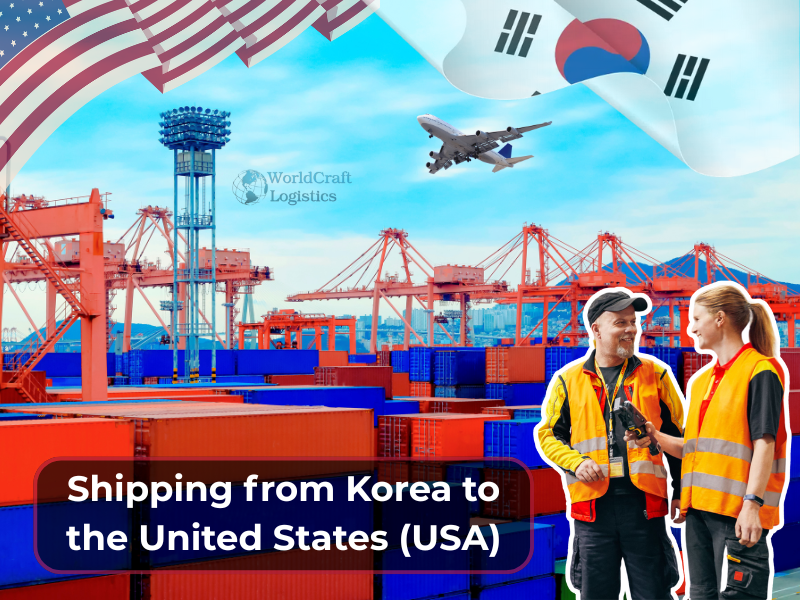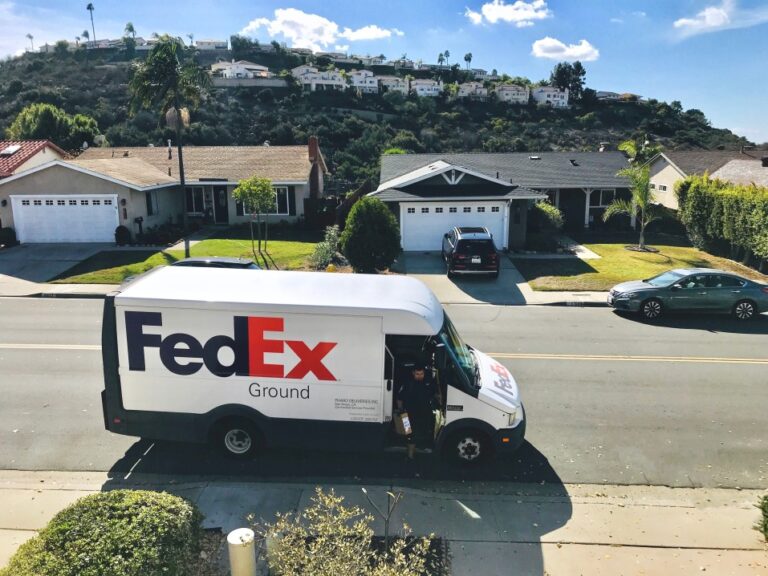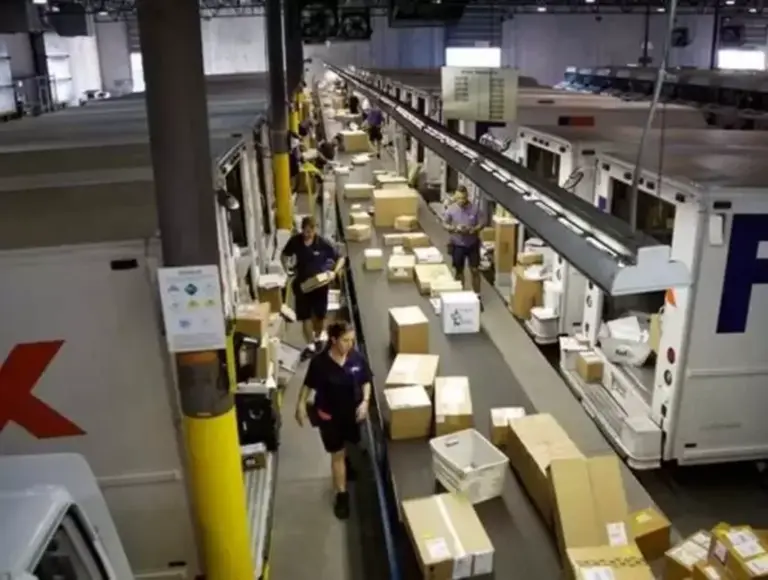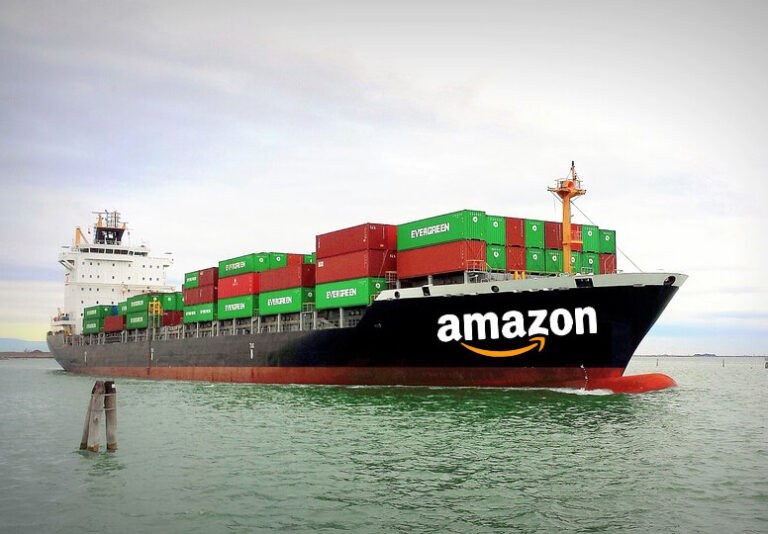Delivery From Korea: The Ultimate Guide (2025)
Your Complete Guide to delivery from korea
Navigating the Complexities of International Delivery from Korea
In today’s global marketplace, businesses are increasingly seeking unique products from international sources, with South Korea emerging as a popular destination for high-demand items such as K-beauty products, fashion, and K-Pop merchandise. However, international shipping can present significant challenges, particularly for importers and exporters who may not be familiar with the intricacies of Korean logistics. The complexities of shipping from Korea can create headaches, from determining the most efficient shipping methods to understanding customs regulations and managing costs.
One of the major hurdles businesses face is the multitude of shipping options available, each with varying costs, transit times, and reliability. With various carriers operating in Korea, it can be overwhelming to select the right service that balances speed and affordability. Additionally, the cost structure for international shipping can be opaque, with hidden fees and surcharges often driving up the total expense unexpectedly.
Beyond shipping logistics, understanding customs procedures is crucial. Each country has its own regulations regarding imports, and failure to comply can lead to delays, fines, or even confiscation of goods. Businesses must be equipped with knowledge about customs documentation, duties, and taxes to ensure a smooth delivery process.
Moreover, risks associated with international shipping can pose significant challenges. From damaged goods to lost packages, the potential for mishaps is heightened when crossing international borders. Businesses must develop strategies to mitigate these risks, ensuring that they are prepared for any eventuality.
In this comprehensive guide, we will delve into the key areas of delivering goods from Korea, including:
- Shipping Methods: Explore the various options available and how to choose the right one for your needs.
- Costs: Gain insights into pricing structures and how to manage shipping expenses effectively.
- Transit Times: Understand the timelines associated with different shipping methods and how they impact your business.
- Customs: Learn about the essential customs regulations and documentation required for smooth importation.
- Risks: Identify common risks in international shipping and how to navigate them.
By the end of this guide, you will have the expert knowledge necessary to navigate the complexities of delivery from Korea efficiently. Empower yourself with insights that will enable your business to thrive in an increasingly interconnected global market.
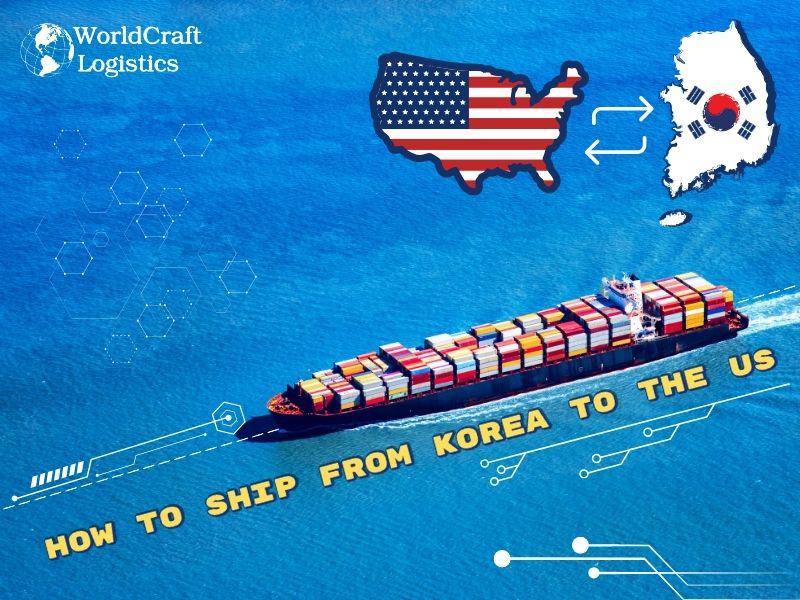
Table of Contents
- Your Complete Guide to delivery from korea
- Understanding Your Shipping Options: A Detailed Comparison
- Deconstructing the Cost: A Full Pricing Breakdown
- Transit Time Analysis: How Long Will It Take?
- Navigating Customs Clearance: A Step-by-Step Guide
- A Practical Guide to Choosing Your Freight Forwarder
- Incoterms 2020 Explained for Shippers
- Risk Management: Identifying and Mitigating Common Shipping Problems
- Frequently Asked Questions (FAQs) for delivery from korea
- Conclusion: Key Takeaways for Successful Shipping
- Important Disclaimer
Understanding Your Shipping Options: A Detailed Comparison
Overview of Shipping Methods from Korea
Navigating the shipping landscape can be daunting for international shippers, importers, and exporters. Understanding your options is crucial for optimizing logistics, managing costs, and ensuring timely delivery. This guide will provide an in-depth comparison of various shipping methods relevant to deliveries from Korea, including their key advantages and disadvantages.
Comparison Table of Shipping Methods
| Shipping Method | Best For | Speed | Cost Level | Key Advantages | Key Disadvantages |
|---|---|---|---|---|---|
| Sea FCL | Large shipments | Slow (20-30 days) | Low | Cost-effective for bulk, no weight limit | Longer transit time, requires port access |
| Sea LCL | Smaller shipments | Slow (20-30 days) | Moderate | Cost-effective for smaller loads | Higher per-unit cost, potential for delays |
| Air | Urgent shipments | Fast (1-5 days) | High | Quick delivery, reliable tracking | Expensive, weight restrictions |
| Rail | Overland shipments | Moderate (10-20 days) | Moderate | Eco-friendly, cost-effective for heavy loads | Limited routes, potential for delays |
| Express | Time-sensitive items | Very Fast (1-3 days) | Very High | Fastest service, door-to-door delivery | Extremely high cost, weight restrictions |
Detailed Breakdown of Each Method
Sea Freight (FCL and LCL)
Full Container Load (FCL)
FCL shipping is ideal for businesses with large volumes of goods. A full container is dedicated to a single shipper, allowing for a more economical option per unit.
- When to Use: High-volume shipments, consistent demand.
- Key Advantages:
- Cost-effective for bulk shipments.
- Less handling reduces the risk of damage.
- Key Disadvantages:
- Requires significant storage space.
- Longer transit times (20-30 days).
Less than Container Load (LCL)
LCL shipping allows multiple shippers to share a single container. This is beneficial for smaller shipments that do not fill an entire container.
- When to Use: Smaller shipments that do not justify a full container.
- Key Advantages:
- Flexibility in shipment size.
- Lower initial costs compared to FCL.
- Key Disadvantages:
- Higher cost per unit due to shared space.
- Potential delays due to consolidation.
Air Freight
Air freight is the fastest shipping method, suitable for urgent deliveries or high-value items.
- When to Use: Time-sensitive shipments or high-value goods.
- Key Advantages:
- Quick transit times (1-5 days).
- Reliable and consistent service.
- Key Disadvantages:
- High shipping costs.
- Weight limitations can restrict larger shipments.
Rail Freight
Rail shipping is a viable option for overland transportation, particularly for shipments to neighboring countries.
- When to Use: Bulk shipments traveling overland.
- Key Advantages:
- Eco-friendly and efficient for heavy loads.
- Generally lower costs than air freight.
- Key Disadvantages:
- Limited routes and availability.
- Potential for delays due to scheduling.
Express Shipping
Express shipping services (e.g., DHL, FedEx) provide the fastest delivery options available.
- When to Use: Extremely urgent or valuable shipments.
- Key Advantages:
- Fastest delivery option (1-3 days).
- Door-to-door service.
- Key Disadvantages:
- Very high costs.
- Limited to smaller packages due to weight restrictions.
Special Considerations
Multimodal Transport
Multimodal transport combines various shipping methods to optimize delivery times and costs. For example, using sea freight for the primary leg of a journey and air freight for the final delivery can balance cost and speed effectively.
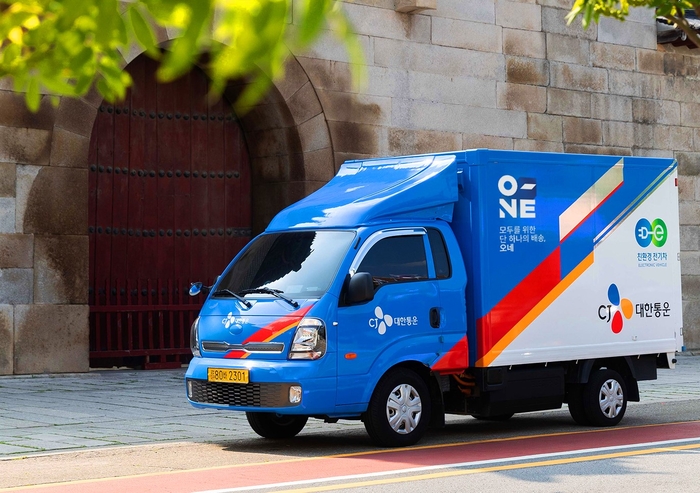
- Advantages:
- Flexibility in route planning.
- Potential cost savings by optimizing transport methods.
- Disadvantages:
- Complexity in coordination and logistics.
- Increased risk of delays due to multiple transfers.
Specialized Shipping Options
- Roll-on/Roll-off (RoRo): This method is used for vehicles and heavy machinery. RoRo vessels allow vehicles to be driven on and off the ship, providing a cost-effective solution for transporting large items.
- Break Bulk: Break bulk shipping is suited for large, heavy items that cannot fit in standard containers. This method involves loading cargo directly into the ship’s hold.
Conclusion
Choosing the right shipping method for deliveries from Korea requires careful consideration of several factors, including shipment size, urgency, and budget. By understanding the nuances of each method—ranging from sea freight options (FCL and LCL) to air freight and express services—shippers can make informed decisions that align with their operational needs. Additionally, exploring multimodal transport and specialized shipping options can further enhance logistics strategies, ensuring efficient and cost-effective delivery solutions.
Deconstructing the Cost: A Full Pricing Breakdown
Understanding the Costs of Delivery from Korea
When it comes to shipping goods internationally from Korea, understanding the complete cost structure is crucial for businesses aiming to optimize their logistics. The total cost of delivery can be broadly divided into three main categories: Main Freight, Origin Charges, and Destination Charges. Each of these components has its own set of factors that influence pricing, which can vary significantly depending on the nature of the goods, shipping method, and destination.
Main Cost Components
Main Freight
Main Freight is the core expense associated with transporting goods from one location to another. It can be categorized into two primary shipping methods: air freight and sea freight.
-
Air Freight: Generally, this method is faster but more expensive. The cost is often calculated based on weight (per kilogram) or volumetric weight (dimensional weight), whichever is higher. Factors influencing air freight costs include the distance to the destination, fuel surcharges, and seasonal demand fluctuations.
-
Sea Freight: This method is more economical for larger shipments but takes longer. Pricing is typically based on container size (e.g., 20ft or 40ft containers) or less-than-container load (LCL) rates. Factors affecting sea freight costs include port fees, shipping line rates, and bunker fuel prices.
Origin Charges
Origin Charges encompass all costs incurred at the point of departure. These can include:
-
Packing and Handling Fees: Charges for preparing goods for shipment, including packaging materials and labor.

-
Export Duties and Taxes: Certain goods may be subject to export taxes imposed by the Korean government.
-
Documentation Fees: Costs related to preparing necessary shipping documents, such as bills of lading, commercial invoices, and certificates of origin.
-
Warehouse Fees: If goods are stored temporarily before shipping, warehousing fees may apply.
Destination Charges
Once the goods reach their destination, additional charges are incurred, including:
-
Customs Duties and Taxes: Import duties vary by country and depend on the type of goods being imported. Businesses should check the specific regulations of their destination country.
-
Handling Fees: Charges for unloading and handling goods at the destination port or warehouse.
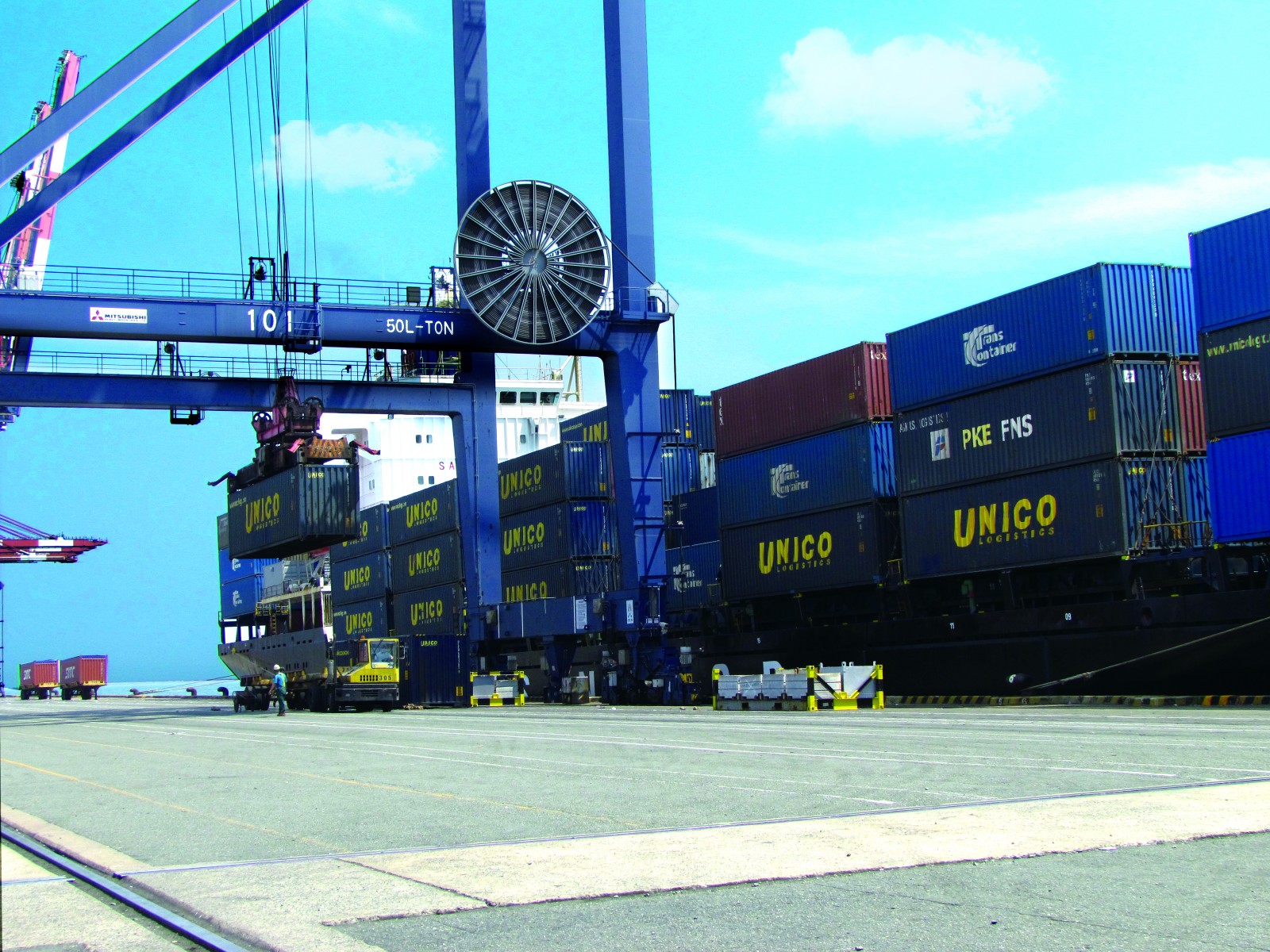
-
Delivery Fees: Costs associated with transporting goods from the port to the final destination, which may vary based on distance and delivery method.
Detailed Cost Factor Analysis
Main Freight
The price of main freight can be influenced by various factors, including:
- Weight and Volume: Heavier and larger shipments typically incur higher costs.
- Shipping Method: Air freight is usually more expensive than sea freight, especially for bulk shipments.
- Seasonality: Costs can rise during peak shipping seasons (e.g., holidays) due to increased demand.
Origin Charges
Key factors affecting origin charges include:
- Packaging Requirements: Specialty packaging may incur additional costs.
- Export Regulations: Compliance with Korean export laws can add to the overall cost.
- Efficiency of Handling: More efficient packing and handling can reduce costs.
Destination Charges
Destination charges can fluctuate based on:
- Local Customs Policies: Import regulations vary by country and can significantly impact costs.
- Distance from Port: The further the delivery point from the port, the higher the transportation costs.
- Local Market Conditions: Changes in demand for logistics services in the destination area can also affect pricing.
Example Pricing Table
The following table provides a sample pricing structure for both sea and air freight from Korea to various international destinations. Please note that these are estimated costs and may vary based on specific circumstances.
| Shipping Method | Container Size | Estimated Cost (USD) | Cost per KG (Air Freight) |
|---|---|---|---|
| Sea Freight | 20ft Container | $1,200 – $2,500 | N/A |
| Sea Freight | 40ft Container | $2,500 – $4,000 | N/A |
| Sea Freight | LCL (1 CBM) | $200 – $500 | N/A |
| Air Freight | N/A | N/A | $5 – $15 |
Disclaimer: The prices listed above are estimates and can vary based on multiple factors including the time of year, specific shipping routes, and additional services required. Always consult with a logistics provider for precise quotes.
How to Reduce Costs
To ensure that your logistics expenses remain manageable, consider implementing the following strategies:
-
Consolidate Shipments: Combine smaller shipments into one larger shipment to take advantage of bulk rates.
-
Choose the Right Shipping Method: Evaluate the cost-effectiveness of air versus sea freight based on urgency and volume.
-
Negotiate Rates: Build relationships with freight forwarders and negotiate better rates based on your shipping volume.
-
Optimize Packaging: Use efficient packaging solutions to reduce weight and volume, which can lower shipping costs.
-
Stay Informed on Customs Regulations: Understanding the customs duties and taxes of the destination country can help avoid unexpected costs.
-
Plan Shipments During Off-Peak Times: Shipping during less busy periods can result in lower freight costs.
-
Utilize Technology: Leverage shipping calculators and logistics management software to better understand and predict shipping costs.
By understanding the various cost components and implementing effective cost-saving strategies, businesses can navigate the complexities of international shipping from Korea more efficiently and economically.
Transit Time Analysis: How Long Will It Take?
Understanding Transit Times for Delivery from Korea
When it comes to international shipping, understanding transit times is crucial for businesses that rely on timely deliveries. The time it takes to ship goods from Korea can vary significantly based on several factors. Here, we will explore the key variables that influence transit time and provide an estimated transit time table for various routes.
Factors Influencing Transit Time
- Shipping Mode: The method of transportation chosen plays a significant role in determining how long a shipment will take.
- Air Freight is generally faster, with transit times often ranging from 1 to 7 days depending on the destination. However, it can be more expensive.
-
Sea Freight is slower but more economical for large shipments, typically taking anywhere from 10 to 45 days, depending on the route and specific shipping line.
-
Port Congestion: The state of the ports can greatly affect transit times. Congestion can lead to delays in loading and unloading cargo. Major ports in the USA, Europe, and Asia often experience high traffic, especially during peak seasons, leading to unpredictable delays.
-
Customs Clearance: Customs processes can add time to the transit period. Each country has its own customs regulations, and delays can occur if documentation is not in order or if additional inspections are required. Understanding the customs procedures of both the exporting and importing countries is essential to avoid unexpected delays.
-
Shipping Routes: The specific route taken can impact transit times. Some shipping lines may offer direct routes, while others may require transshipment at intermediate ports, which can add to the total shipping time.
-
Weather Conditions: Adverse weather can cause delays in shipping schedules. Typhoons, storms, or heavy fog can affect both air and sea freight operations, leading to potential disruptions in transit times.
Estimated Transit Time Table
Below is a table that outlines estimated transit times for various shipping routes from Korea to different destinations. These estimates are based on typical port-to-port shipping conditions and may vary based on the factors mentioned above.
| Origin | Destination | Sea Freight (Days) | Air Freight (Days) |
|---|---|---|---|
| Busan | Los Angeles | 14-20 | 3-5 |
| Incheon | New York | 20-30 | 5-7 |
| Busan | Hamburg | 18-25 | 4-6 |
| Incheon | Sydney | 15-22 | 5-8 |
| Busan | Lagos | 25-35 | 7-10 |
| Incheon | London | 20-28 | 5-7 |
Context and Explanation
The estimates provided in the table reflect typical transit times from port to port. It is essential for shippers to recognize that these are average durations and actual shipping times can vary based on several factors, including those discussed earlier.
When planning shipments, businesses should also factor in additional time for customs clearance and potential delays due to port congestion or unforeseen weather events. A good practice is to build a buffer into your delivery timelines to accommodate these variables, particularly for high-value or time-sensitive shipments.
In conclusion, understanding the intricacies of transit times when shipping from Korea allows businesses to make informed decisions, ensuring that they meet their delivery commitments while managing costs effectively. By considering the factors influencing transit times and utilizing the estimated table, shippers can better navigate the complexities of international logistics.
Navigating Customs Clearance: A Step-by-Step Guide
Understanding the Customs Clearance Process
Navigating customs clearance can be a daunting task for international shippers, particularly when importing goods from Korea. This step-by-step guide outlines the typical workflow, essential documentation, and common pitfalls to help ensure a smooth experience.
The Process Explained
-
Pre-Shipment Preparation
Before you ship your goods, ensure you have a clear understanding of the regulations governing the importation of goods into your country. Research any specific restrictions or requirements related to the items you plan to import, such as licensing or permits. -
Gather Required Documentation
Collect all necessary documents to facilitate customs clearance. This includes a commercial invoice, packing list, bill of lading, and any other relevant documentation that may be required by your country’s customs authority. -
Choose a Reliable Freight Forwarder
Partner with a reputable freight forwarder who specializes in international shipping from Korea. They can assist you with logistics, documentation, and navigating customs regulations, significantly easing the process. -
Submit Customs Declaration
Your freight forwarder will typically handle the submission of your customs declaration, which outlines the details of your shipment. Ensure all information is accurate and matches the accompanying documents to avoid delays. -
Customs Inspection
Customs authorities may choose to inspect your shipment. This could involve physical inspection of the goods to verify their contents against the submitted documentation. Be prepared for this possibility and ensure that your goods are properly packaged and labeled. -
Payment of Duties and Taxes
Upon successful inspection, you will be required to pay any applicable duties and taxes based on the declared value of your goods. This step is crucial, as failure to pay can result in delays or even confiscation of your shipment. -
Release of Goods
Once all documentation is approved and duties are paid, customs will release your goods for delivery. Your freight forwarder will coordinate the final delivery to your specified location.
Essential Documentation
To ensure a smooth customs clearance process, you must prepare several key documents:
-
Commercial Invoice
This is a critical document that details the transaction between the seller and buyer. It includes information such as the seller and buyer’s names and addresses, a description of the goods, quantity, unit price, and total value. -
Packing List
This document provides an itemized list of the contents of each package within the shipment. It helps customs officials verify the shipment’s contents during inspection and is essential for accurate duty calculations. -
Bill of Lading (BOL)
The BOL serves as a contract between the shipper and the carrier. It outlines the details of the shipment, including the type of goods, quantity, destination, and shipping method. It acts as proof of ownership and is necessary for claiming the goods upon arrival. -
Certificate of Origin
This document certifies that the goods being shipped are produced in a particular country, which may affect duty rates and eligibility for preferential tariffs. -
Import License
Depending on the nature of the goods being imported, an import license may be required. Verify with your local customs authority to determine if this applies to your shipment.
Duties, Taxes, and HS Codes
Understanding how duties and taxes are calculated is vital for budgeting your shipment costs:
-
HS Codes
Harmonized System (HS) Codes are internationally standardized numerical methods of classifying traded products. Each product is assigned a unique code that determines its tariff classification and applicable duties. It is crucial to accurately classify your goods to avoid delays and penalties. -
Duties and Taxes Calculation
Duties are typically calculated based on the customs value of the goods, which includes the cost of the goods, shipping, and insurance. Taxes may also apply depending on the destination country’s regulations. Be sure to consult with your freight forwarder or customs broker to understand the specific duties and taxes applicable to your shipment.
Common Problems & Solutions
Navigating customs clearance can present challenges. Here are some common issues and how to avoid them:
-
Incomplete Documentation
Solution: Ensure that all required documents are complete and accurate. Double-check that the information in your commercial invoice matches the packing list and other documents. -
Incorrect HS Codes
Solution: Research and verify the correct HS Codes for your goods before shipping. Consult with your freight forwarder or customs broker if you are unsure. -
Unpaid Duties and Taxes
Solution: Calculate and prepare for duties and taxes in advance. Consult your freight forwarder for an estimate to avoid unexpected costs that could delay delivery. -
Customs Inspections Delays
Solution: Be prepared for inspections by ensuring your goods are well-packaged and labeled. Maintain clear communication with your freight forwarder to stay updated on any inspection requirements. -
Miscommunication with Customs Authorities
Solution: Work with a knowledgeable freight forwarder who can facilitate clear communication between you and customs authorities. This can help prevent misunderstandings that could lead to delays.
By following this step-by-step guide, you can navigate the customs clearance process for your shipments from Korea with confidence, ensuring a seamless delivery experience for your business.
A Practical Guide to Choosing Your Freight Forwarder
Understanding the Role of a Freight Forwarder
When it comes to shipping goods internationally, particularly from Korea, selecting the right freight forwarder is crucial for ensuring timely and cost-effective delivery. A freight forwarder acts as an intermediary between shippers and various transportation services, managing the logistics of getting your products from point A to point B. With many options available, it’s essential to choose a forwarder that aligns with your business needs. Below is a comprehensive guide to help you make an informed decision.
Key Qualities to Look For
1. Experience and Expertise
Choose a freight forwarder with a proven track record in international shipping, especially with routes from Korea. Experienced forwarders will have a better understanding of local regulations, customs procedures, and potential challenges that may arise during transit.
2. Extensive Network
A robust network of carriers and agents is vital. This includes relationships with shipping lines, airlines, and customs brokers. A forwarder with a wide-reaching network can offer more flexible options and better rates, as well as access to various modes of transport (air, sea, rail, and road).
3. Licensing and Compliance
Verify that the freight forwarder is licensed and complies with international shipping regulations. This includes having the necessary permits and certifications, such as an International Air Transport Association (IATA) certification for air freight and a Federal Maritime Commission (FMC) license for ocean freight.
4. Strong Communication Skills
Effective communication is key in logistics. Your chosen forwarder should be responsive and proactive in providing updates about your shipments. Look for a partner that offers multiple channels of communication, including email, phone, and online tracking tools.
5. Customer Service
A reliable freight forwarder should prioritize customer service. This includes being available to answer questions, address concerns, and provide assistance throughout the shipping process. Read reviews and testimonials to gauge their service quality.
Sourcing Checklist
When selecting a freight forwarder, follow this actionable checklist to streamline your decision-making process:
- Define Your Needs
-
Assess your shipping volume, frequency, and specific requirements (e.g., temperature-controlled shipping, hazardous materials, etc.).
-
Research Potential Forwarders
-
Create a shortlist of freight forwarders specializing in shipping from Korea. Utilize online resources, industry networks, and referrals from other businesses.
-
Request Quotes
-
Contact your shortlisted forwarders for quotes. Ensure that they provide detailed breakdowns of costs, including shipping fees, customs duties, and any additional charges.
-
Ask Questions
-
Inquire about their services, including shipping methods, insurance options, and how they handle customs clearance. Clarify their policies on package tracking and storage.
-
Check References
- Reach out to previous clients or read online reviews to gain insights into their reliability, professionalism, and overall performance.
Red Flags to Watch Out For
While evaluating freight forwarders, be vigilant for the following warning signs that may indicate potential issues:
- Lack of Transparency: If a forwarder is vague about pricing or terms, it may lead to unexpected fees and complications down the line.
- Poor Communication: Slow responses or unhelpful customer service can hinder your ability to manage shipments effectively.
- Negative Reviews: Consistent negative feedback from clients regarding service quality, delays, or lost shipments should raise concerns.
- Limited Shipping Options: A forwarder that offers few shipping methods or routes may not provide the flexibility you need for efficient logistics.
- Unverified Credentials: If a forwarder cannot provide proof of licensing or certifications, it’s a significant red flag. Always verify their credentials before proceeding.
Conclusion
Choosing the right freight forwarder for delivery from Korea is a vital step in ensuring the success of your international shipping operations. By focusing on the essential qualities, following a structured sourcing checklist, and being aware of red flags, you can make an informed decision that supports your business objectives. A reliable freight forwarder not only simplifies logistics but also enhances your overall shipping experience, allowing you to focus on growing your business.
Incoterms 2020 Explained for Shippers
Understanding Incoterms in International Shipping
Incoterms, short for International Commercial Terms, are a series of predefined commercial terms published by the International Chamber of Commerce (ICC). They serve as a universal standard for international shipping, defining the responsibilities of buyers and sellers regarding the delivery of goods. By clarifying who is responsible for transportation, insurance, and risk, Incoterms help facilitate smoother trade transactions, particularly in complex shipping scenarios like those involving delivery from Korea.
Key Incoterms Table
| Incoterm | Who Pays for Transport? | Where Risk Transfers? | Best for |
|---|---|---|---|
| EXW | Buyer | At Seller’s premises | Buyers wanting minimal responsibility |
| FOB | Seller | At the ship’s rail | Buyers wanting control over shipping |
| CIF | Seller | At the port of destination | Buyers wanting insurance included |
| DDP | Seller | At the buyer’s premises | Buyers wanting maximum convenience |
Detailed Explanation of Common Incoterms
EXW (Ex Works)
Under the EXW Incoterm, the seller’s responsibility is limited to making the goods available at their premises or another named place (e.g., factory, warehouse). The buyer assumes all costs and risks associated with transporting the goods from that point onward. This term is often used when the buyer has the capability to manage the logistics and wants to control the shipping process entirely.
Example: A German importer purchases electronic components from a supplier in Korea. The supplier makes the goods available at their factory in Seoul. The importer arranges for all transport logistics, including customs clearance and shipping to Germany, assuming all associated risks once the goods are picked up.
FOB (Free On Board)
FOB specifies that the seller is responsible for delivering the goods to a specified port and loading them onto the vessel. The risk transfers to the buyer once the goods are on board the ship. This term is favorable for buyers who wish to have control over the freight process while the seller manages the initial leg of the shipping journey.
Example: An Australian exporter orders machinery from a Korean manufacturer. The manufacturer is responsible for transporting the machinery to Busan Port and loading it onto a vessel. Once loaded, the risk and cost of transport to Australia shift to the Australian exporter.
CIF (Cost, Insurance, and Freight)
CIF requires the seller to cover the costs of shipping and insurance to the destination port. The risk transfers to the buyer when the goods are loaded onto the vessel, but the seller must also ensure that the goods are insured during transit. This term is ideal for buyers who prefer to minimize their risks and costs associated with logistics.
Example: A Nigerian retailer imports textiles from Korea under CIF terms. The Korean supplier arranges for shipping to Lagos and insures the goods during transit. The risk transfers to the retailer once the textiles are loaded onto the ship, but the seller covers the transport and insurance costs until they reach the port of Nigeria.
DDP (Delivered Duty Paid)
DDP places the maximum responsibility on the seller. The seller is responsible for delivering the goods to the buyer’s premises, covering all costs, including import duties and taxes. This term is best for buyers who want a hassle-free experience, as the seller takes care of everything until the goods are delivered.
Example: A startup in Germany orders beauty products from a Korean supplier under DDP terms. The supplier manages all logistics, including shipping, customs clearance, and payment of duties, ensuring that the products arrive at the startup’s door in Germany, with no additional work required from the buyer.
Conclusion
Understanding Incoterms is essential for any business engaged in international shipping, especially when dealing with deliveries from Korea. By choosing the appropriate Incoterm, shippers can better manage risks, costs, and responsibilities, leading to smoother transactions and enhanced business relationships. Whether you are an importer in Germany, an exporter in Australia, or a business owner in Nigeria, selecting the right Incoterm can significantly impact your shipping strategy.
Risk Management: Identifying and Mitigating Common Shipping Problems
Introduction
In the dynamic world of international shipping, particularly when sourcing products from Korea, proactive risk management is paramount. Effective risk management not only safeguards your assets but also ensures timely delivery and enhances customer satisfaction. By identifying potential risks and implementing mitigation strategies, businesses can minimize disruptions, reduce costs, and maintain a competitive edge in the global marketplace. This guide will explore common shipping problems and provide actionable strategies to manage these risks effectively.
Risk Analysis Table
| Potential Risk | Impact | Mitigation Strategy |
|---|---|---|
| Cargo Damage | Loss of product value, increased costs for replacements, and potential liability claims. | Invest in quality packaging materials and employ reliable freight forwarders with good handling practices. Consider using consolidated shipping to minimize movement. |
| Delays | Disrupted supply chains, missed deadlines, and dissatisfied customers. | Plan for potential delays by allowing extra time in shipping schedules. Use tracking systems to monitor shipments and communicate proactively with customers about any delays. |
| Customs Holds | Additional costs due to storage fees, potential fines, and delays in delivery. | Ensure compliance with all customs regulations by accurately declaring the contents and value of shipments. Work with experienced customs brokers who understand the intricacies of importing goods into your region. |
| Regulatory Changes | Sudden changes in import/export regulations can lead to unexpected costs and delays. | Stay informed about international trade regulations and subscribe to industry updates. Engage in regular training for staff involved in logistics to ensure compliance. |
| Theft or Loss | Financial loss and disruption of inventory management. | Use secure shipping methods, such as insured and tracked services, and implement robust inventory management practices. Regularly audit inventory to quickly identify and resolve discrepancies. |
| Currency Fluctuations | Increased costs due to unfavorable exchange rates, impacting overall profitability. | Use hedging strategies or forward contracts to lock in favorable exchange rates and reduce exposure to currency fluctuations. |
Cargo Insurance Explained
Cargo insurance is a critical component of risk management for international shipping. It protects businesses against financial losses due to damage, theft, or loss of goods during transit. Understanding the types of cargo insurance available and their coverage is essential for safeguarding your investments.
Types of Cargo Insurance
-
All-Risk Coverage: This is the most comprehensive insurance policy, covering all risks of physical loss or damage to cargo, except for those specifically excluded in the policy.
-
Named Perils Coverage: This type of insurance covers only the risks explicitly listed in the policy. It is usually less expensive than all-risk coverage but offers limited protection.
-
Warehouse-to-Warehouse Insurance: This coverage extends from the point of origin (warehouse) to the final destination (warehouse), ensuring protection throughout the entire shipping process.
-
Specific Cargo Insurance: Tailored for high-value or specialized items, this insurance provides coverage based on the unique risks associated with those goods.
Why Cargo Insurance is Essential
-
Financial Protection: Cargo insurance mitigates financial losses in case of unforeseen events. Without it, businesses may face substantial out-of-pocket expenses to replace damaged or lost goods.
-
Peace of Mind: Knowing that your goods are insured allows for smoother operations, reducing stress associated with potential shipping mishaps.
-
Increased Credibility: Companies that invest in cargo insurance are viewed as more professional and trustworthy by clients and partners, enhancing their reputation in the market.
-
Compliance with Contracts: Many contracts with suppliers or clients may require proof of insurance. Having the right coverage in place ensures compliance and strengthens business relationships.
Conclusion
In conclusion, effective risk management is essential for navigating the complexities of shipping from Korea. By identifying potential risks such as cargo damage, delays, customs holds, regulatory changes, theft, and currency fluctuations, businesses can implement strategic mitigation measures. Additionally, investing in cargo insurance provides a safety net that protects against financial losses and enhances operational efficiency. By adopting these practices, international shippers, importers, and exporters can ensure a smoother shipping experience, ultimately leading to greater customer satisfaction and business success.
Frequently Asked Questions (FAQs) for delivery from korea
1. What shipping methods are available for delivery from Korea?
There are several shipping methods available for international delivery from Korea, including EMS (Express Mail Service), air freight, sea freight, and small packet services. Each method varies in terms of speed, cost, and package size limitations. EMS is generally the fastest option, while sea freight is more economical for larger shipments but takes longer.
2. How do I calculate shipping costs for my packages from Korea?
Shipping costs depend on several factors, including the weight and dimensions of the package, the shipping method chosen, and the destination country. Most logistics providers offer online calculators to estimate shipping fees based on these parameters. Additionally, consider any customs duties or taxes that may apply upon arrival.
3. What is chargeable weight, and how is it calculated?
Chargeable weight is the weight used by shipping companies to determine shipping costs. It is calculated based on the greater of the actual weight or the volumetric (dimensional) weight of the package. Volumetric weight is calculated by multiplying the package’s dimensions (length, width, height) and dividing by a specific factor set by the carrier (commonly 5000 cm³/kg).
4. What is the difference between a Bill of Lading (BOL) and an Air Waybill (AWB)?
A Bill of Lading (BOL) is a document used in sea freight that serves as a receipt for the cargo and a contract for the transportation of goods. An Air Waybill (AWB) is used in air freight and acts as a receipt for goods and a contract between the shipper and the airline. While both documents serve similar purposes, they are used for different modes of transport.
5. Are there any restrictions on items that can be shipped from Korea?
Yes, certain items are prohibited or restricted from being shipped internationally. These may include hazardous materials, perishable goods, counterfeit items, and certain electronics. It’s crucial to check the specific regulations of both the exporting and importing countries before shipping.
6. What customs documentation is required for shipping goods from Korea?
Customs documentation varies by destination country but typically includes a commercial invoice, packing list, and any required permits or licenses. For commercial shipments, a Certificate of Origin may also be necessary. Ensure that all documentation is accurate and complete to avoid delays.
7. How long does it take for packages to be delivered from Korea to international destinations?
Delivery times vary based on the shipping method chosen and the destination. Generally, EMS can take 3-7 days, air freight may take 5-10 days, and sea freight can take several weeks. Customs clearance times can also affect the overall delivery timeline.
8. What should I do if my package is delayed or lost in transit?
If your package is delayed or lost, first contact the shipping provider to initiate a trace. Keep all relevant documentation, including tracking numbers and shipping receipts. Depending on the carrier’s policy, you may be eligible for compensation if the package is confirmed lost.
9. How can I track my shipment from Korea?
Most shipping providers offer online tracking services. Upon shipment, you will receive a tracking number that can be entered on the carrier’s website to monitor the status of your package. Additionally, some forwarding services provide tracking updates via email or SMS.
10. Do I need a customs bond when importing goods from Korea?
A customs bond is generally required for commercial shipments valued over a certain threshold (often $2,500 in the U.S.). This bond acts as a guarantee that duties, taxes, and penalties will be paid. For personal shipments, a bond may not be necessary, but it’s advisable to check the specific requirements of your destination country.
Conclusion: Key Takeaways for Successful Shipping
Effective Planning is Crucial
Successful shipping from Korea requires meticulous planning. Begin by identifying your specific needs—whether you are importing K-beauty products, electronics, or fashion items. Understanding the nature of your goods will help you select the right shipping methods and partners. Consider factors like delivery speed, reliability, and the potential for customs issues. Research various logistics providers and choose one that aligns with your shipping goals and budget.
Choosing the Right Partners
Collaborating with experienced freight forwarders and logistics companies is vital. A reliable partner can streamline the shipping process, offer cost-effective solutions, and navigate the complexities of international customs. Companies like Delivered Korea and Korgou provide tailored services, including package consolidation, free storage, and a variety of shipping options to over 220 countries. Always check customer reviews and service offerings to ensure you’re partnering with a reputable provider.
Understanding Costs
Shipping costs can vary significantly based on weight, dimensions, and shipping method. It’s essential to obtain quotes from multiple providers and consider additional fees such as customs duties, taxes, and handling charges. Be transparent with your suppliers about your budget constraints and seek discounts for bulk shipments or long-term partnerships.
Call to Action
Navigating the world of international shipping from Korea can be complex, but with careful planning, the right partnerships, and a keen understanding of costs, your business can thrive in the global marketplace. Don’t hesitate to reach out to logistics experts to discuss your specific shipping needs. Start your journey today and unlock the vast opportunities that Korean products have to offer!
Important Disclaimer
⚠️ Important Disclaimer
The information in this guide is for educational purposes only and does not constitute professional logistics advice. Rates, times, and regulations change frequently. Always consult with a qualified freight forwarder for your specific needs.
